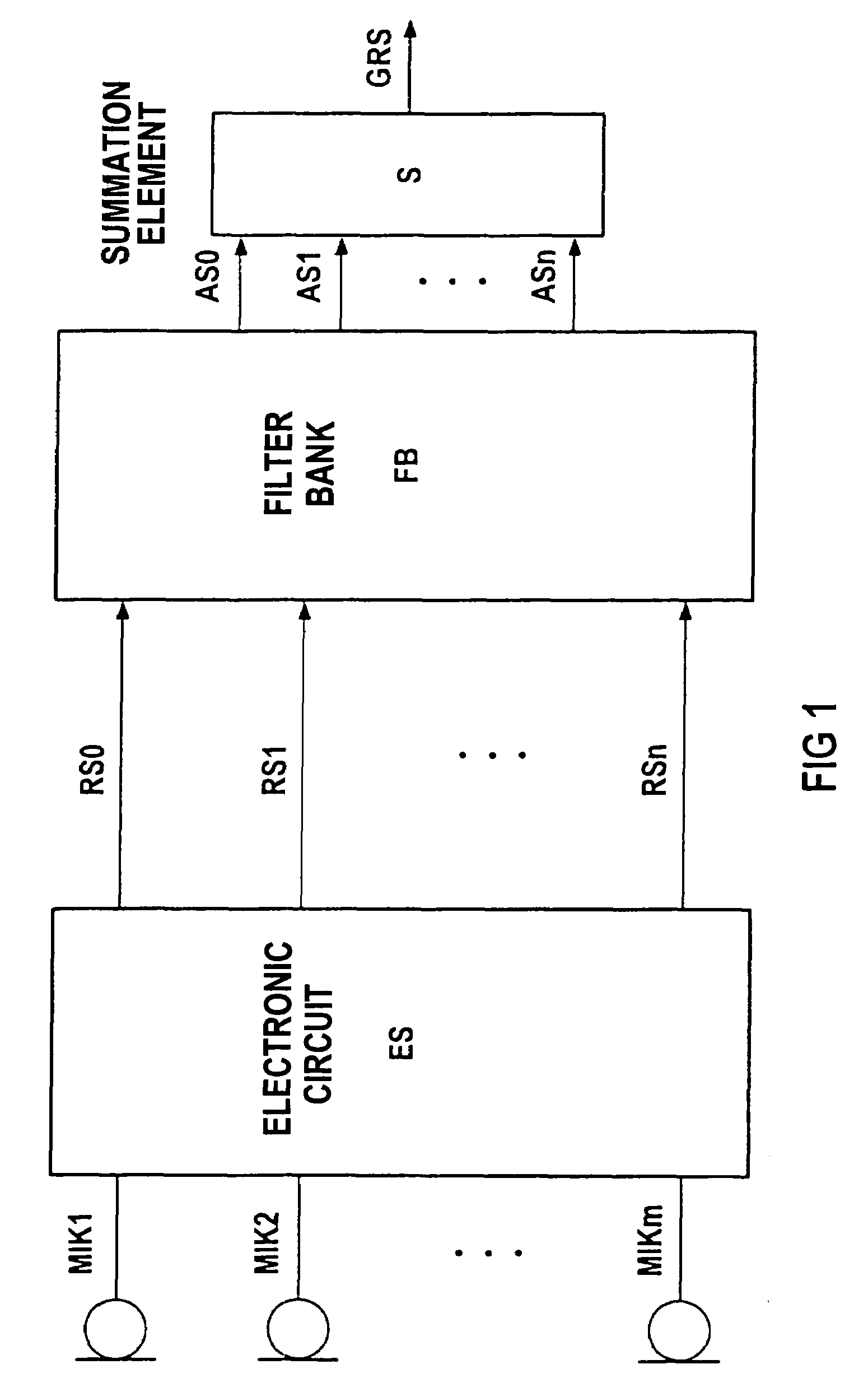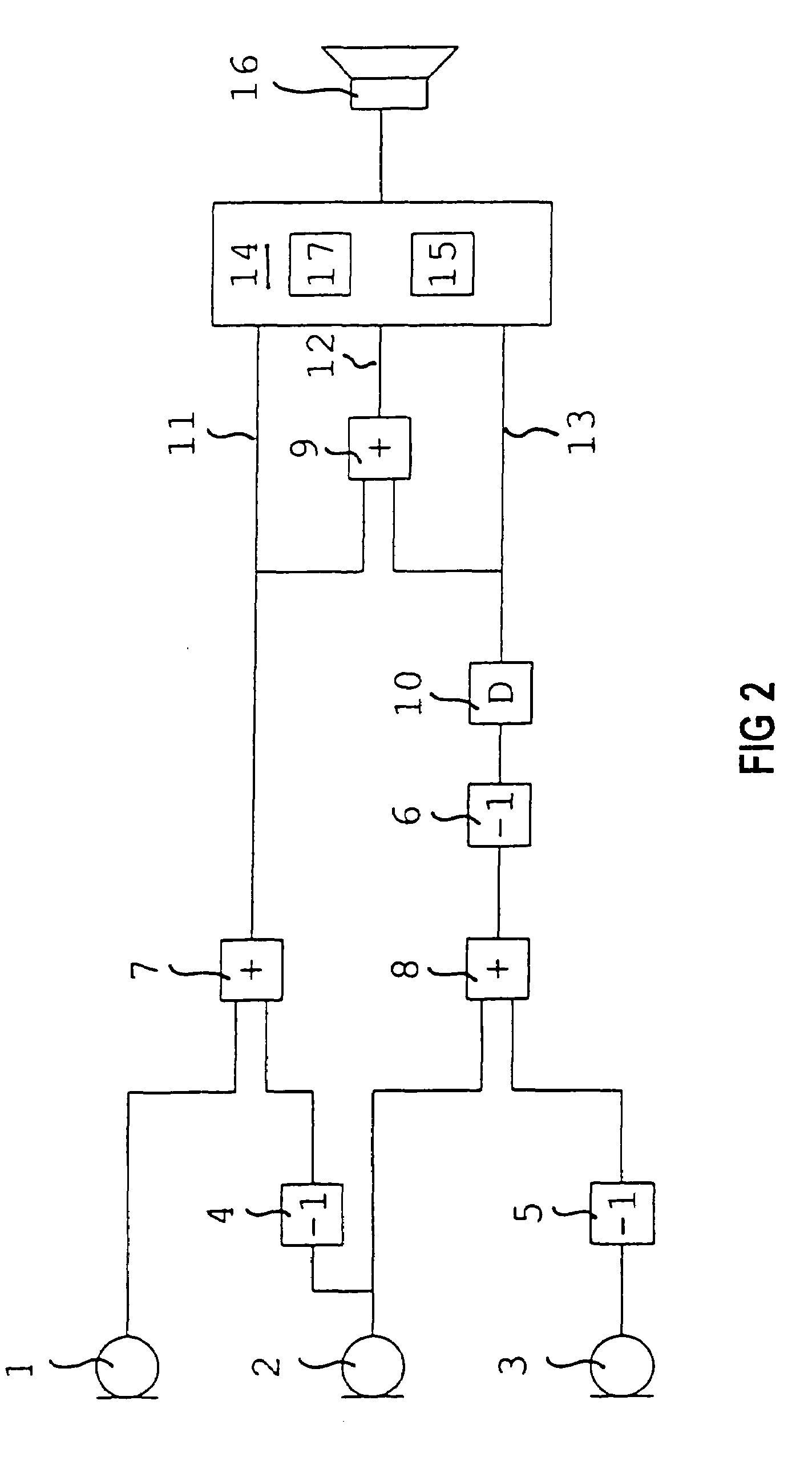Hearing aid device, comprising a directional microphone system and a method for operating a hearing aid device
a technology of directional microphone and hearing aid, which is applied in the direction of deaf-aid sets, stereophonic arrangments, electrical appliances, etc., can solve the problems of arrays with too large signal-to-noise ratio, n>1 has a negative directivity index, and the directivity index (di) is not wanted
- Summary
- Abstract
- Description
- Claims
- Application Information
AI Technical Summary
Benefits of technology
Problems solved by technology
Method used
Image
Examples
Embodiment Construction
[0020]In the basic circuit diagram shown in FIG. 1, the microphones of a hearing aid have been labeled as MIK1, MIK2, . . . , MIKm. To form directional microphone systems of a different order, the output signals of the microphones are coupled together in an electronic circuit ES. The electronic circuit arrangement ES for formation of directional microphone systems can include electronic components such as delay elements, adding elements or inverters. The directional microphone signals thus formed at the output of the electronic circuit ES are labeled as the directional microphone signal of the zeroth order RS0, directional microphone signal of first order RS1, up through the directional microphone signal of n-th order RSn. A plurality of directional microphone signals of the same order can also be formed. In the hearing aid according to the invention, however, at least two directional microphone signals differ in respect of their order. For further processing of the directional micr...
PUM
 Login to View More
Login to View More Abstract
Description
Claims
Application Information
 Login to View More
Login to View More - R&D
- Intellectual Property
- Life Sciences
- Materials
- Tech Scout
- Unparalleled Data Quality
- Higher Quality Content
- 60% Fewer Hallucinations
Browse by: Latest US Patents, China's latest patents, Technical Efficacy Thesaurus, Application Domain, Technology Topic, Popular Technical Reports.
© 2025 PatSnap. All rights reserved.Legal|Privacy policy|Modern Slavery Act Transparency Statement|Sitemap|About US| Contact US: help@patsnap.com



